Both gracious and audacious, the 1936-38 Bugatti Type 57 SC Atlantic Coupe is regarded as the greatest triumph of Jean Bugatti’s automotive artistry, a design so otherworldly that it remains unique, a feat never to be repeated again.
Just four of the groundbreaking coupes were built, each slightly different from the rest, with three known to remain in existence. The missing Atlantic – the one that Jean Bugatti, Ettore Bugatti’s son, kept for himself – apparently vanished into the chaos of World War II.
Today, those three surviving Atlantics are considered to be the most valuable collector cars in the world. The French coupes each remain in private hands, one of them in the collection of famed fashion designer Ralph Lauren, another displayed at the Mullin Automotive Museum in Los Angeles.
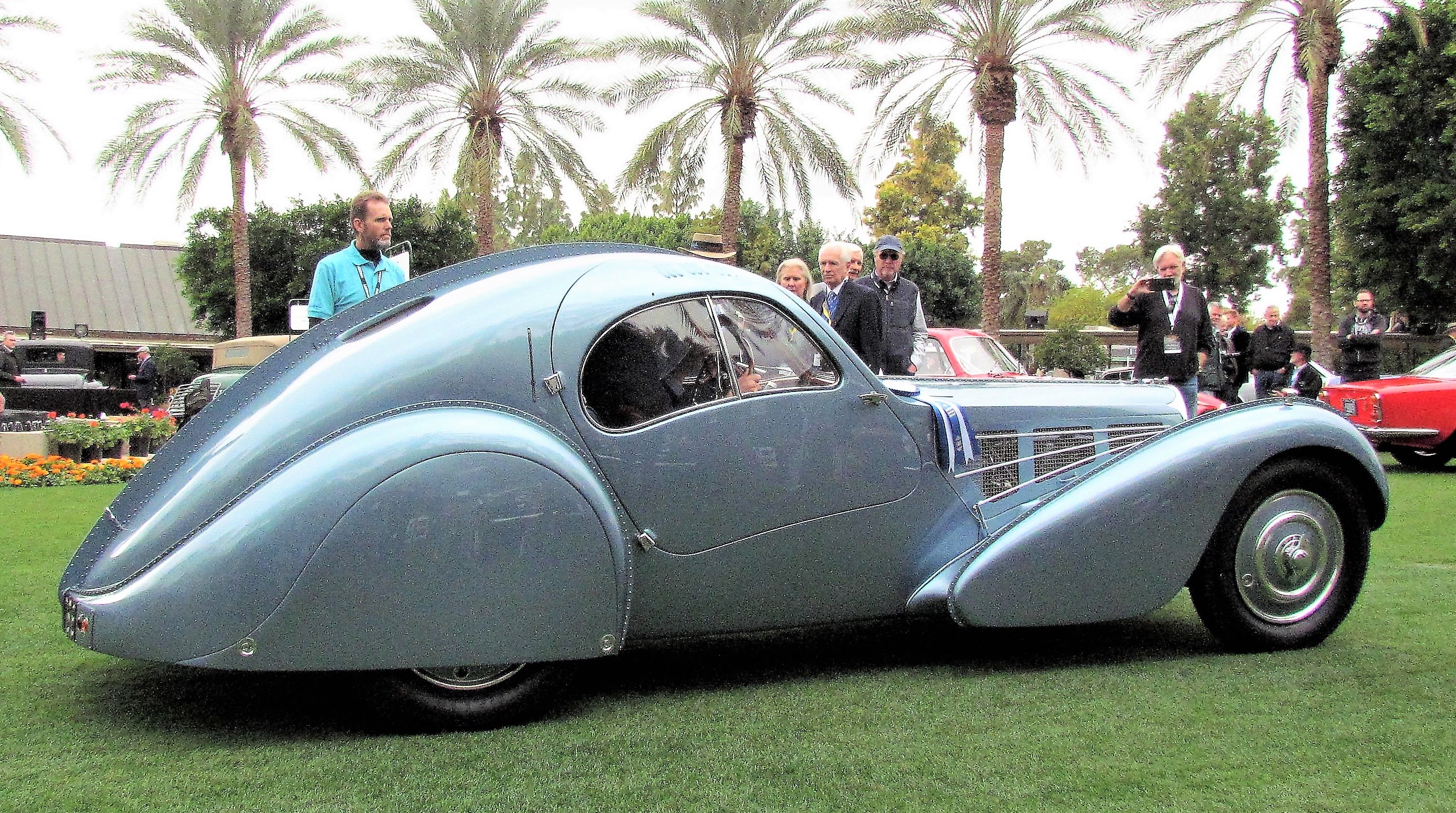
The Atlantic, with its majestically flowing form rendered in aluminum panels connected by raised riveted seams, was recently celebrated in an homage from Bugatti Automobiles as it rolls out its latest generation of hyperexotic sports cars.
“The Atlantic is among the icons in Bugatti’s long tradition,” Stephan Winkelmann, president of Bugatti, said in the news release. “In terms of elegance, quality and performance, the coupé was unique in its time and is still unique today. A luxury super sports car.
“For us, it is both an inspiration and a commitment. Our current hyper sports cars Chiron, Chiron Sport and Divo continue this tradition in the modern age – in line with the spirit of Bugatti.”
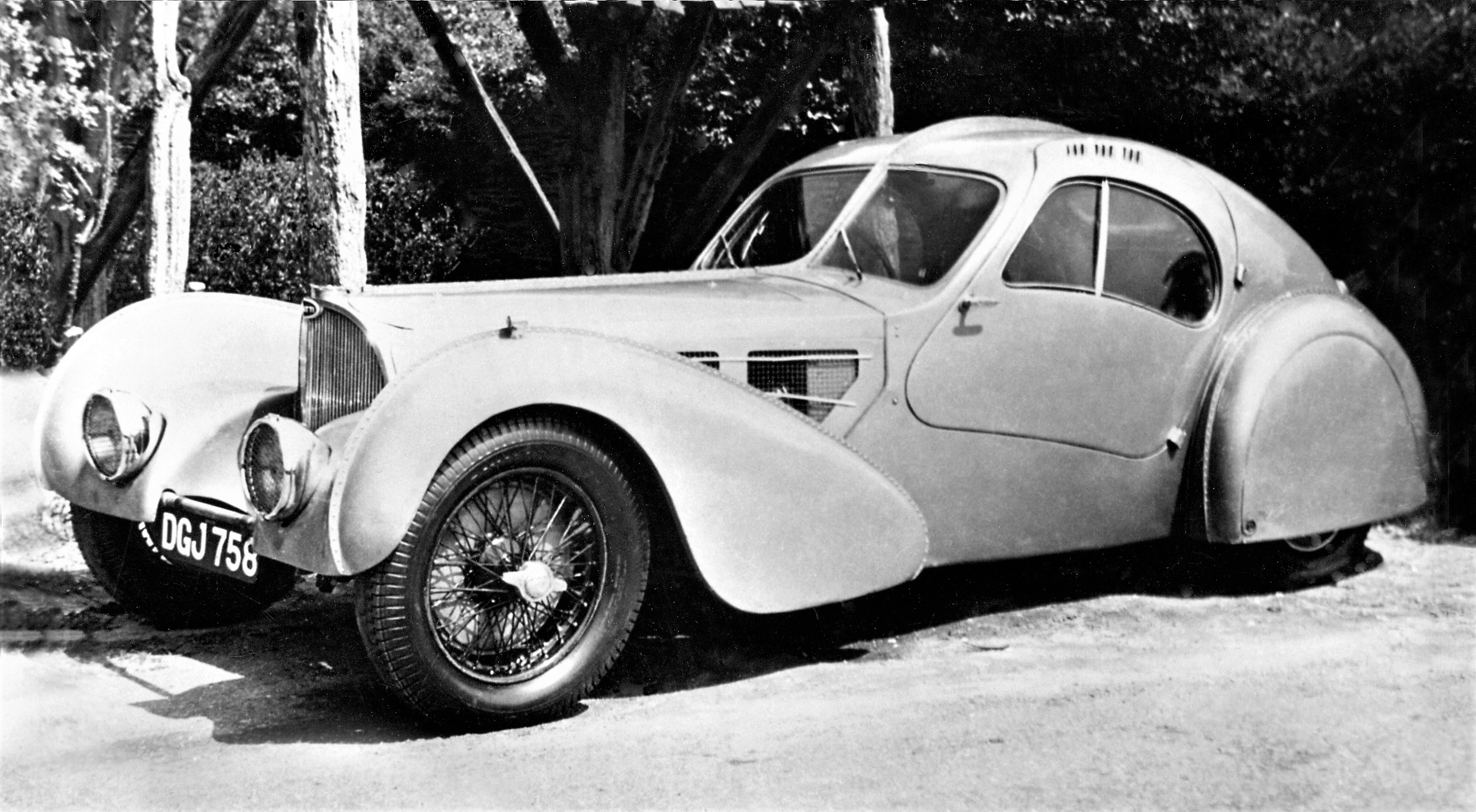
The story of the Atlantic starts with Jean Bugatti’s efforts around 1930 to modernize and standardize the brand’s competition and sporting models. The result was the Type 57, from which sprung a number of hand-crafted sedans, coupes, sports cars and racers, with a production total of around 800 when the model lineup ended in 1940.
The Atlantic was first seen as an over-the-top 1935 show car, the Aérolithe Coupe, a unique styling expression most notable because of its raised and riveted body seams.
The riveting was as much an engineering solution as a design feature as the body was made entirely of an aviation material called Elektron, which was 90 percent magnesium and 10 percent aluminum, making it strong and lightweight but impossible to weld.
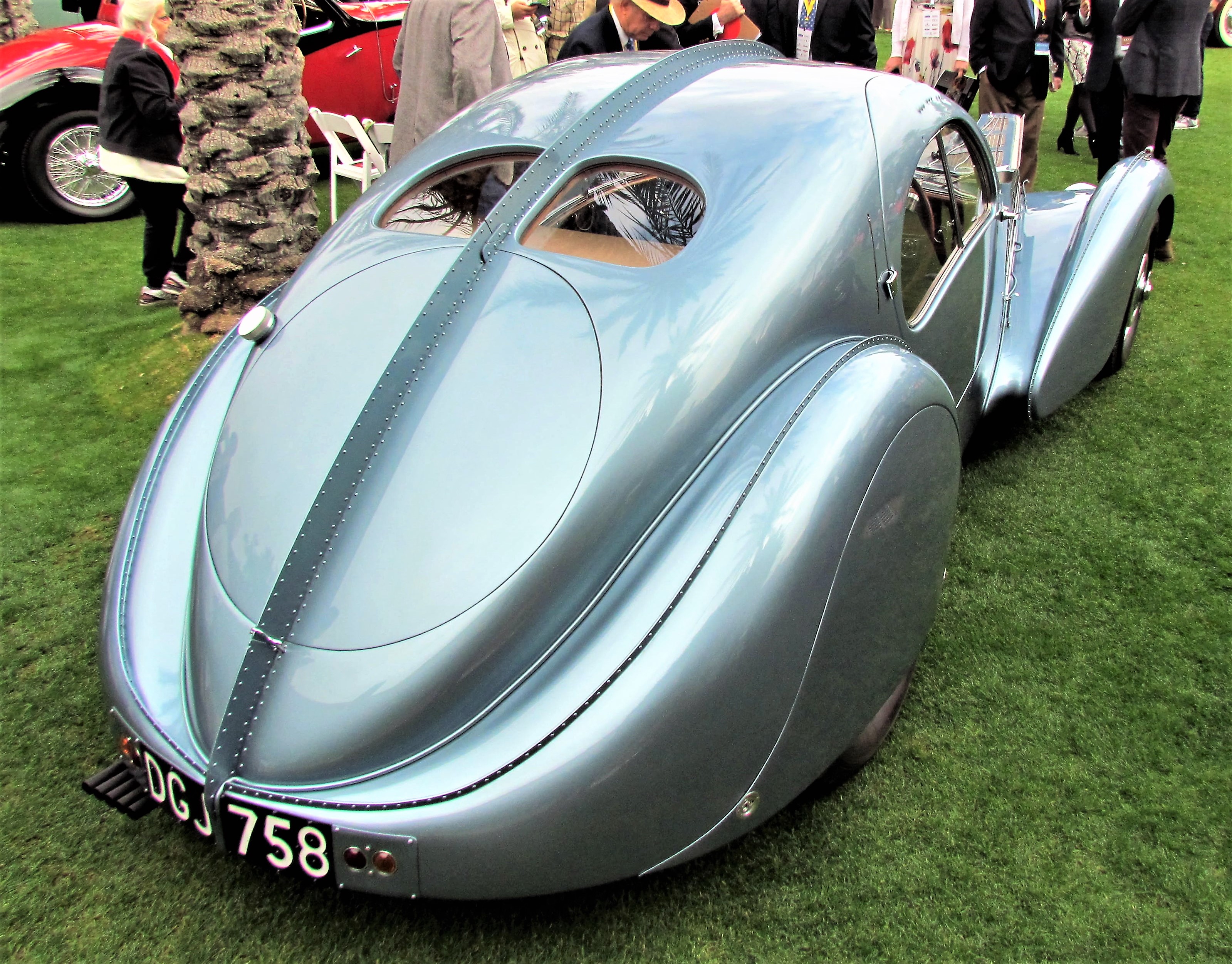
So the decision was made to rivet the panels together in a quasi-aircraft fashion. The riveting became a signature feature of the Aérolithe, with the tall seams running over the fenders and across the length the body, from stem to stern.
The treatment looked alluringly modernistic to the 1935 spectators, and the Bugatti show car was lauded and acclaimed, so much so that Jean Bugatti made plans for a limited run of production models based on the Type 57. The Atlantic was the result.
But while the Atlantics’ bodies were made of stable aluminum instead of the volatile magnesium alloy, Jean Bugatti wisely opted to retain the riveted construction, thereby creating a classic for the ages. The basic shape of the Atlantic (sans rivets) lived on through the ’30s, including Bugatti’s own Atalante coupe, and adopted by numerous designers and custom builders through the post-war years.
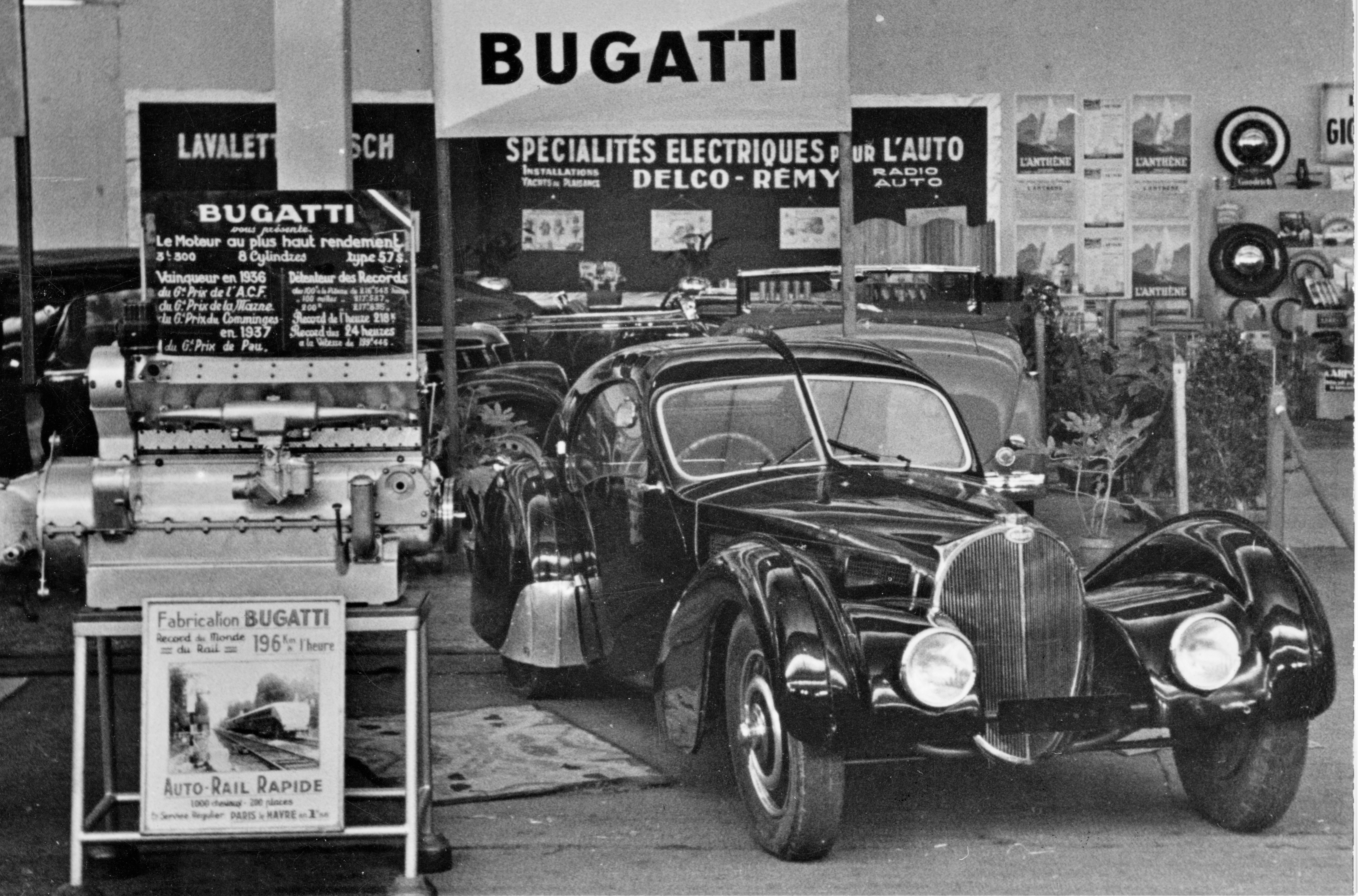
In Bugatti’s news release, the Atlantic is lovingly described for its bold design and immaculate execution.
“When it first appeared, its body was already strikingly beautiful and exotic,” the release says. “The wheels stand out from the body and the bonnet is extremely long for a car with an overall length of only 3.70 meters (12 feet). The rear end flows down in an oval shape extending almost to the ground. Six thin tailpipes complete the rear view.
“An outstanding design feature is a raised seam running vertically from the hinge in the split bonnet to the tail. Like a sharp fin, it divides the body in the middle. Rivets hold the split metal sheets in place.”

Bugatti’s director of design, Achim Anscheidt, heaps praise on the Atlantic.
“The Type 57 SC Atlantic is a design manifesto of Jean Bugatti,” Anscheidt said. “The breathtaking proportions of this masterpiece were simply unparalleled at the time and are still thrilling to the present day with their fascinating elegance. The riveted aluminum seam running over the roof is still a signature design feature to this day.”
Of the three remaining Atlantics, the first one was sold to British banker Victor Rothschild, and it now stands in original restored condition at the Mullin museum, co-owned by museum founder Peter Mulllin and Rob Walton, also a noted car collector.
The second car, sold to Jacques Holzschuh of France in 1936, was later destroyed in a fatal accident at a railroad crossing – it was put back together decades later from the twisted remains. That car also is housed in a private collection.

The fourth Atlantic, completed in May 1938 and originally owned by R.B. Pope of Great Britain, is the restored car now in the Lauren collection.
The third coupe built, a black car that Jean Bugatti retained for himself and displayed in auto shows and brochures, is the one that disappeared without a trace. It might have been sold to one of Bugatti’s racing friends or hidden away before the Nazis invaded the Alsace region of France.
That Atlantic could be lying somewhere still, undisturbed, waiting to be rediscovered after eight decades of repose.
“Its disappearance is one of the great mysteries in the history of the automobile,” Bugatti added. “Experts estimate the value of the Atlantic at more than €100 million ($114 million) – if it ever appears again.”



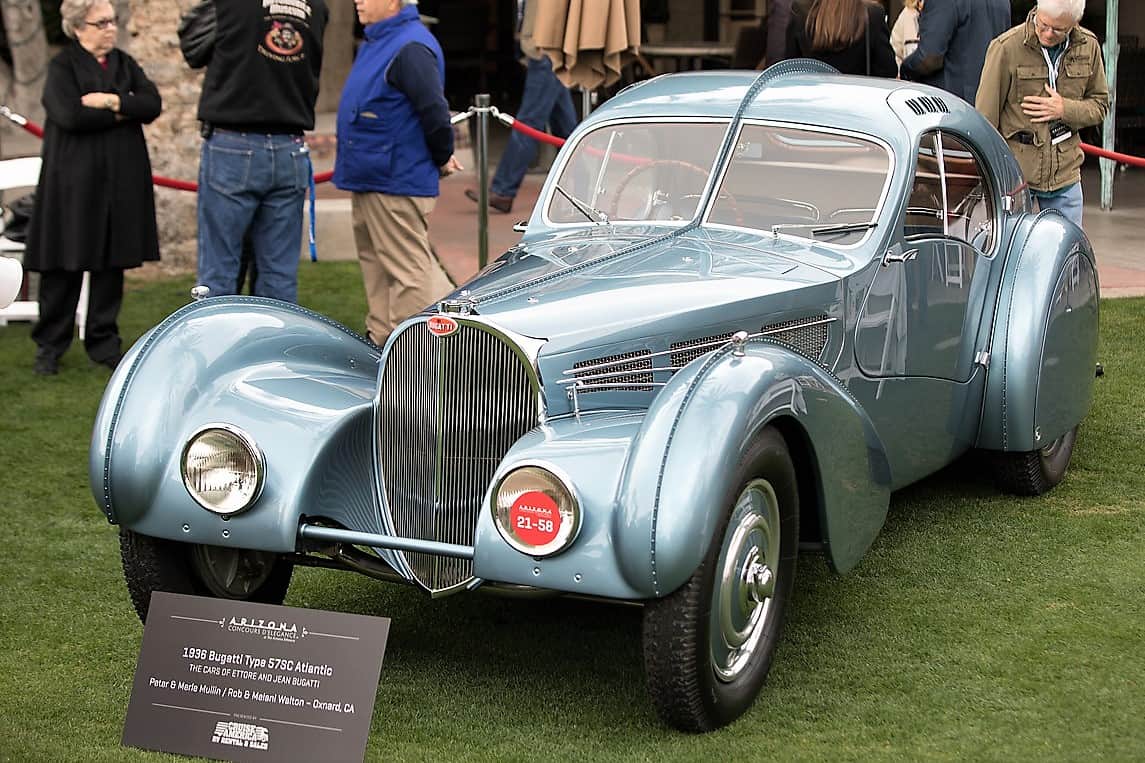


4 produced, of which I estimate 9 remain…counting the "rebodies", one of which Jay Leno owns.
Sorry, but that Bugatti looks like something someone hammered together in their garage. Sorry, but I sure don’t see what is so special about it.
Seems like the missing Atlantic (no3) would make perfect fodder for a timeless novel, along the lines of ‘The Monuments Men’, except it would have to involve a little higher percentage of fiction and fantasy. Anyone working on that that you no of? (A job for Bob? I’l take a small cut for the idea if it is original.) Are there articles already that speculate on its possible locations?
In 2015 I saw an exact replica of one of these Bugatti’s at a concourse here in Canada. The car was built by The Guild here in Canada.
Your article and photographs just blow my mind. What a car. What a history and what a price tag.
I’ve seen the Atlantic at the Mullin Museum several times. It is truly a beautiful and timeless classic.
I was at a Concours car show in Northwest Indiana yesterday and there was a 1936 Bugatti 57SC Atlantic there. I assume it is one of the tribute cars that are out there as it looked like the missing ‘Black Car’ that belonged to Jean Bugatti. I had heard about 20 years ago that this car was in the area, but had never seen it in the hundreds of car shows I have been to in that time. It was very well done on a 57SC chassis with disc wheels and fender skirts on the rear. Sadly, I could not locate the owner to get more information about the car.